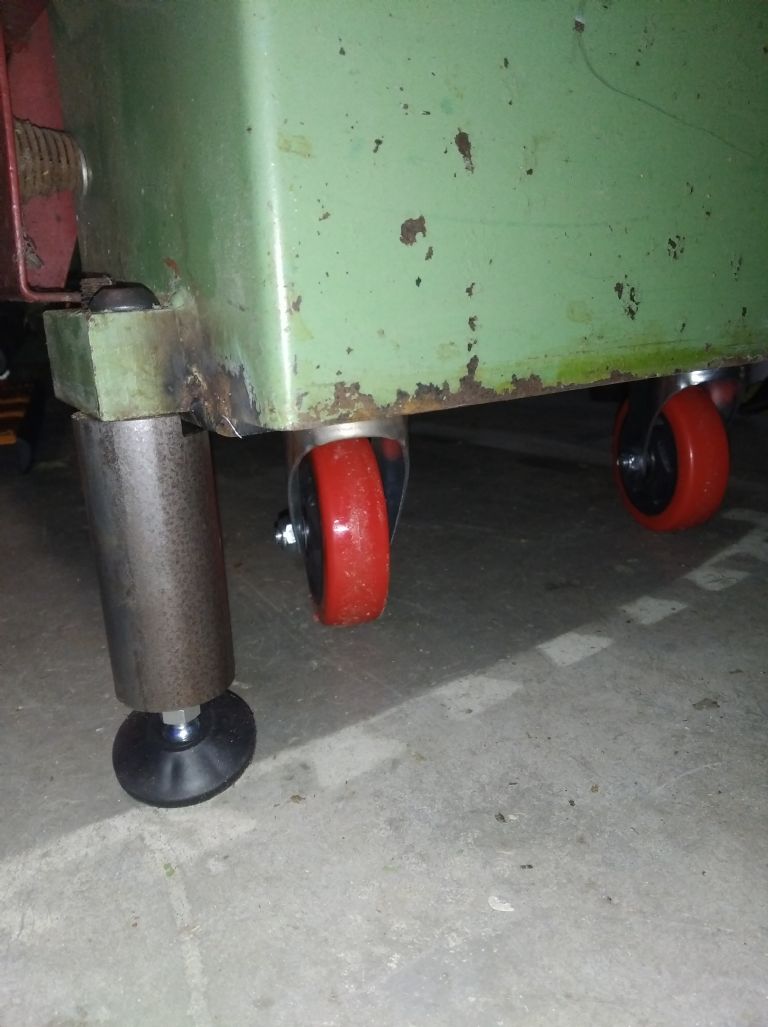Welcome Callum.
FWIW, this is my advice. Interrupted by tea time! )
First, strap the lathe to the pallet. so that is less likely to fall off.
Gently lever it up onto some short lengths of scaffold poles. A you will need at least three.
If you use dollies, make sure that they can take the load, Two may be a good idea, rather than trying to balance everything on a dolly that is shorter than the pallet.
Roll the pallet and machine forward, replacing each roller with a spare just before the pallet comes off. You can steer things by gentle slewing on the rollers.
To go over soft ground, it would make make life MUCH easier to be able to roll over boards or steel plates, even if you can manage only two and have to keep "stepping" up the one just left behind. At least the rollers won't sink into the grass!
Once on hard standing, a pry bar can be used to adjust the direction of travel and position.
%mm clearance each side w through the door will be tight.
Any chance you could rig a block and tackle so that everything can be slowly winched through the door way?
Once inside, the prybar can be used to steer things to where you want them.
Ideally, the cabinet should be bolted to the floor. but it may be better to make / fit adjustable feet to bring the lathe l somewhere near level. The first job may be using the lathe to make the adjustable feet!
Once in place, it will be worth adjusting the feet to take nay twist out of the bed.
This will mean that the lathe should cut parallel and not tapered.
You can either use a very sensitive level, or use the method that Myford and Ian Bradley advocate in his book "The Amateur's Workshop" , turning a test piece, and adjusting at the Tailstock end until the bed is free from twist.. Unless you you intend to use flood coolant the level from Headstock to Tailstock is less important, but twist across the bed is a No No if you want be sure of turning parallel..
Once set up you can start making accessories to aid its use, and finding accessories to expand it's abilities.
I would suggest making a Centre Height Gauge, as a useful tool, and then a Mandrel Handle , and possibly a liitle later,,a Saddle stop..
All these will make you more familiar with the machine and be useful items
HTH
Howard
Edited By Howard Lewis on 22/05/2021 19:43:34
Calum.

















